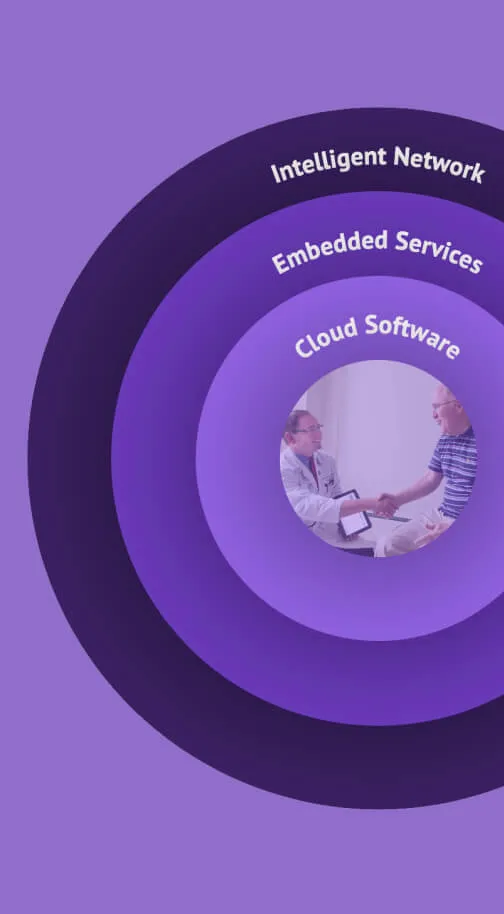With the huge range of alternative payment models (APMs) supported by CMS and other payers, it can be difficult for practices to decide how to enter the value-based care space. Furthermore, not all approaches are mutually exclusive, meaning a practice might be certified as both a Patient Centered Medical Home (PCMH) and an Accountable Care Organization (ACO). With so many options and a veritable alphabet soup of acronyms, how is a practice to decide?
Practices differ in size, patient population, specialties, access to/availability of community partners, and much more. Knowing that, the most important thing is for each practice to make the choice that best fits its care approach, financial situation, technology, and its patients’ needs.
The first thing most practices need to decide is how much risk they are willing and able to take on. Full risk? Upside only? Only in certain specialties? And it’s important to understand that accepting risk is a journey. According to Timothy Dudley, M.D., formerly of DTC Family Health in Greenwood Village, Colorado, “the journey really goes from pay-for-performance up through upside risk only and then on to downside risk.”
As your organization explores its options, here are details that can help you make an informed decision:
Path #1: MIPS
The most simple option for incentive payments of cost and quality is MIPS, CMS’ Merit-based Incentive Payment System. Medicare Part B clinicians choose from a variety of measures in the areas of quality, promoting interoperability, improvement activities, and cost, and receive quality payments based on performance. Most Accountable Care Organizations (ACOs) participate in MIPS, so this is also a good starting point for practices or health systems that eventually want to create an ACO.
Path #2: Advanced APMs
Patient-Centered Medical Home
In order to participate in an Advanced APM, practices must either be a patient-centered medical home (PCMH) or bear more risk in other ways. For many practices, PCMH can be considered step one in the value-based care journey, according to Dudley, as the PCMH model does not generally carry any penalty. The PCMH model has been around since the 1960s, and is primarily an approach to care that focuses on the whole patient and is coordinated across providers, specialties, and locations, including coordination with social and behavioral support partners. Care provided by a PCMH must be comprehensive, patient-centered, coordinated, accessible, and high-quality/safe.
Practices certified as PCMHs by NCQA are eligible for an annual bonus as an Advanced APM, based on their composite quality score on certain core measures like preventive screenings and diabetes control.
The patient focus of the PCMH model resonates with providers, and many practices have already adopted some or all of the elements of the PCMH, giving them a head start on certification. And there is often no downside risk, at least to start. Experienced providers agree that practices that have already implemented a team-based care model (or want to) should consider the PCMH model, as this is a key element of the PCMH approach to care.
Accountable care organization
Accountable care organizations (ACOs) have much in common with PCMHs, the key difference being that PCMH is a model of care within a practice, whereas an ACO is primarily a method of reimbursement across a network of providers. However, both share the common goal of lowering costs and improving patient outcomes through coordination across the continuum of care.
CMS requires ACOs to measure and improve select quality performance metrics year over year and to publicly report quality results. ACOs share the resulting savings with CMS – those in the higher tracks can achieve the highest financial rewards, but also share the downside risk if they fail to reduce costs.
Startup costs can be high, requiring more staff, new infrastructure, and new technology to track quality measures and improve risk stratification — that is, assigning each patient a risk score to understand who is most in need of care and outreach. One of the biggest challenges to establishing an ACO is recruiting providers and health systems to join, since patients need to be managed across care settings.
Often large health systems and provider networks are well-positioned to make this investment and to weather potential losses as they refine their performance. But, according to Sachin Jain, M.D., CEO of CareMore Health a California-based ACO, “at CareMore we are fully at risk and there's a full alignment of how people are paid, the kind of work that they're enabled to do, how people are hired — it all comes together in a virtuous circle.”
It also requires a complete commitment to assuming risk – leadership needs to be fully on board and understand why they want to take this on, and they should be able to accurately risk-stratify their patient panel to ensure financial success. And compensation up and down the organization needs to be tied to keeping patients healthier, not to increasing revenue. As Jain says, “if you want patients to be healthier, you have to be fully in a business model that pays you to keep your patients healthier.”
Despite that work at the outset, ACOs are heavily incentivized by CMS more so than PCMHs, which means they offer the most upside potential for practices’ bottom lines — and for patients, the most complete transformation of care.
Independent and small-group physicians may want to explore the possibility of participating in local ACOs that already exist. The individual payout may be lower, but administrative costs are shared, the risk is lower, and payouts come sooner.
Comprehensive Primary Care Plus
Comprehensive primary care plus (CPC+) is a primary care model and multipayer reimbursement structure that aims to improve the quality, access, and efficiency of primary care. Required primary care functions under CPC+ are access and continuity, care management, comprehensiveness and coordination, patient and caregiver engagement, and planned care/population health.
CPC+ provides risk-adjusted per-member, per-month care management fees that help practices invest in care management personnel and infrastructure. And they offer performance-based incentives paid prospectively and reconciled later. Both these elements make CPC+ an easier entry point for small practices that cannot absorb significant downside risk, especially those that have not yet staffed up to support value-based care.
In Track 1, practices receive upfront risk-adjusted care management fees, at-risk incentive-based payments per member, and continue to receive regular fee-for-service (FFS) Medicare payments. In Track 2, practices receive the same risk-adjusted care management fees and incentive-based payments, but also get a proactive comprehensive primary care payment (CPCP) and a commensurately reduced FFS payment. Practices have a tremendous amount of leeway in how they spend care management fees, so there is a lot of flexibility to design a customized approach practice-by-practice.
This is an attractive option for practices in areas where payers are increasingly demanding that practices take on some value-based care risk, but they need help offsetting the upfront costs of care management personnel and resources.
This was the situation faced by Jersey Coast Family Medicine when the practice enrolled in CPC+, because “we saw the writing on the wall with regard to value-based care, and felt we needed to be at the table,” according to physician Kenneth Kronhaus, M.D. “and CPC has aligned with our philosophy to provide comprehensive patient care, decrease utilization, increase access, and to try to keep patients out of the hospital.”
Episode-of-care
Episode-of-care (or, bundled payments) are a reimbursement method in which providers receive a set amount for all care associated with a given medical problem or condition during a specific period of time. CMS or another payer sets a target price for the episode, and providers are responsible for costs in excess of the target, but share in the savings if they are below it.
Episode-of-care reimbursement makes the most sense in specialties or service lines with relatively standardized care, high volume, and high cost. Ideally, these are service lines where the practice believes they have an opportunity for cost saving by improving efficiency and/or economies of scale.
Good candidates for bundled payments are labor and delivery, cardiovascular care, stroke treatment, and orthopedics, especially joint replacements under the Comprehensive Care for Joint Replacement program. Bundled payments are relatively easier to implement than ACOs or CPC, as practices get to handpick the areas in which they want to pursue value-based care reimbursement. Bundled payments also offer a way for specialties to get in the value-based care game, since most of the other models are largely focused on primary care.
Hospital value-based purchasing
Under this model, acute-care hospitals contract with CMS at predetermined inpatient care rates. CMS withholds a certain percentage of those payments, pools the money, and then uses that to fund value-based payments to hospitals based on their performance on specified quality measures like hospital-acquired infections and patient experience. Hospitals receive payments based both on how they perform relative to other hospitals in the program, and how much they improve.
Hospital value-based purchasing, or pay-for-performance, makes sense for any acute care hospital that relies on CMS for a significant amount of its reimbursement. Experts who watch the hospital market believe CMS is moving toward requiring this kind of value-based payment for substantially all hospitals in the future, so it would behoove hospitals to set themselves up for success.












